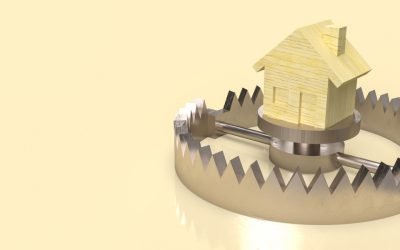You’ve found a potential investment property, the location is right, the price looks good…but wait! The floors are sagging! Do you go ahead and buy a house with sagging floors?
Sagging floors are a sign of structural problems in the home. Before making an offer, you should have the issue inspected by a qualified professional to understand the cause and likely cost to repair. If you’re comfortable with the findings, go ahead and make an offer; if not, move on to another property.
As each situation is unique, there isn’t a definitive answer that can be given. Sagging floors are a common problem in older houses, and can be caused by a number of factors.
In most cases, sagging floors can be corrected with some simple repairs. However, if the problem is severe, it may not be worth buying the house.
What are the signs of sagging floors?
Sagging floors are one of those things that most homeowners don’t think much about until they notice a problem, and if they’ve not noticed the issue then you, as a property investor, need to spot it and flag it to them to avoid unnecessary expense.
There are several signs that a floor is sagging.
First, you should look at the condition of the floor. Is it cracked? Do you see any gaps between floorboards? Does the floor feel soft or spongy underfoot? These are all signs that your floor is probably sagging.
Second, you should look at floor joists. Joists are the beams that support the floor. If you see any cracks or holes in the joists, that’s another sign that your floor is sagged.
Third, you should look at whether the subfloor has been damaged. Subfloors are the layers of plywood or particleboard that lie beneath the floor. If the subfloor is damaged, that’s yet another sign that your floor has sagged.
Fourth, you should look at how floorboards fit together. If floorboards appear loose or warped, that’s another sign of sagging.

What causes sagging floors?
There isn’t one specific thing that causes floors to sag. It could happen for a range of reasons, for example the use of low-quality materials and improper installation.
As a property investor, you should treat sagging floors as a warning sign that there could be a bigger problem.
Water damage
If water seeps into the foundations, the wooden elements of the property (e.g. beams and floor joists) are vulnerable to water intrusion. Over time, the moisture expands and contracts, causing the wood to shrink and expand.
Eventually, the structure of the floor is weakened, causing it to sag.
This is unlikely to be the only problem you will find if water is the problem. Look for damp spots around windows, doors, pipes, and electrical outlets. Also look for wet carpet, mouldy walls, and cracked ceilings.
These are all warning signs that something may be wrong with the property.
Similar damage can be caused where there is high humidity, with the wood absorbing water from the air rather than from direct contact with liquid.
Infestations
Water isn’t the only thing that can damage wood. There are a number of insects that love to make the wood in your home a place to live, laying eggs that eventually hatch and start eating the surrounding wood.
For more information on this see: Should I Buy a House with Woodworm?
Construction Methods
There might not be anything wrong with the materials used, instead it might be how they’ve been used which causes uneven floors.
In this case it might be a structural issue, the wrong size of beams being used which have since needed additional material added (known as a shim) to help correct the issue.
Or it could be foundation issues, for example settling, cracking, bulging, and bowing. These conditions usually occur when soil beneath the home shifts over time. The shifting causes the ground to sink or rise, causing the structure above to move in relation to the ground. This movement may cause cracks, bulges, or other structural damage.
What are the risks of buying a house with sagging floors?
While bouncy floors may not seem like much of a problem, the main risks of buying a house with sagging floors is that the floor may eventually collapse, causing serious damage to the property and possibly injuring the occupants, which could result in costly legal action.

They might also trap water or other debris, which could create hazardous conditions, and may contribute to health problems by making it easy for pests and allergens to enter the property.
If you’re considering purchasing a house with unstable or saggy floors, be sure to talk to a professional inspector before making any decisions. They’ll be able to give you feedback regarding the extent of the problem and the repair costs you’ll incur.
How can you fix sagging floors?
Fixing sagging floors can be done in a few different ways, depending on the severity of the problem.
Some simple fixes include replacing flooring, re-pointing and fastening joists to the beams or rafters, and adding weight-bearing walls or ceiling panels.
More serious repairs may require tearing down part of the house and rebuilding it from scratch.
There are risks associated with fixing sagging floors, but they can usually be minimised by doing a careful evaluation before starting any work. That’s why it’s vital you understand the extent of the problem before purchasing the property, to uncover any hidden costs.
How much does it cost to fix sagging floors?
Fixing sagging floors can cost a lot of money. Depending on the severity of the problem, you may need to replace the flooring, repair it, or simply reinforce it with beams or joists, so you could have a bill for £1000 to £10,000 or more.
Depending on the severity of the problem, you may need to replace the flooring (or part thereof), repair it, or simply reinforce it with beams or joists.
In some cases, only partial repairs will be necessary; in others cases entire sections of flooring may have to be replaced due to structural weakness caused by moisture damage.
The costs associated with each option will vary depending on factors like location and condition of the flooring and building structure below it, and that’s where a floor specialist can help you identify the problem and how to address it.
How can you prevent sagging floors?
As a property investor and landlord it’s important to keep your investment in peak performance, preventing sagging floors is important to maintaining a safe and healthy home for the occupants.
There are a few things you can do to keep your floors from deteriorating:
- Regularly check for moisture damage. Moisture can cause wood flooring to swell and buckle, leading to structural failure. Make checking for this part of the regular inspection cycle.
- Repair any water leaks as soon as they happen. Water can seep through cracks in the flooring and cause mold or mildew growth, which could lead to structural failure.
- Ask tenants to keep the floor clean by regularly sweeping and mopping it. This will help remove dirt, dust, and other debris that may accumulate over time and contribute to moisture damage or structural failure.
Final Thoughts
If you have sagging floors, it’s important to take action before they become a problem. You can fix them yourself or hire a professional to do the job.
There are risks associated with fixing your own floors, and hiring a professional may be the best option.
Sagging floors are a common problem in older houses, and can be caused by a number of factors. In most cases, sagging floors can be corrected with some simple repairs. However, if the problem is severe, it may not be worth buying the house.
When considering a property purchase you should also consider whether you want to repair the flooring, weighing up the cost, time, difficulty, and risk.
The cost of repairing the floor depends on the severity of the problem and how much work needs to be done.
The time it will take to repair the floor depends on how bad the damage is and if any special tools or materials are needed. The longer the repair time, the longer you’ll have to wait before you can rent the property out.
Repairing your floors may be difficult depending on their condition; are you able to carry out the repairs or will it take a professional?
You should weigh all of these factors carefully before making a decision about whether to invest in a property that has sagging floors.
- Rent-to-Rent Schemes: Hidden Dangers Lurk - July 6, 2024
- How to Sell Your House Fast in Kent - July 5, 2024
- 7 Tips to Sell Your House Fast - July 4, 2024


